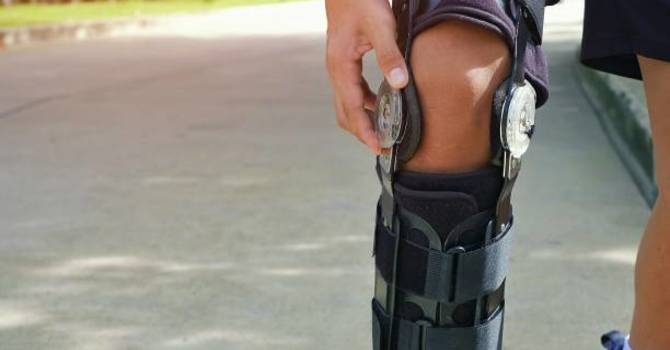
You’ve probably heard of Platelet-Rich Plasma (PRP) injections as a cutting-edge treatment for various injuries and conditions. But what exactly are PRP injections, and how do they work? If you’re curious about this therapy and how it might help with healing, you’re in the right place. Let’s break down the process and explore how PRP injections can be a game-changer for your health.
What is PRP?
Defining PRP
Platelet-Rich Plasma (PRP) is a concentration of platelets and growth factors derived from your own blood. Platelets are small blood cells that play a crucial role in healing and repair by releasing growth factors that stimulate tissue regeneration. PRP therapy harnesses these components to help accelerate the healing process.
The PRP Process
PRP therapy involves three main steps: drawing blood, processing it to concentrate the platelets, and injecting the PRP into the area needing treatment. Let’s dive into each step to understand how it all works.
The Step-by-Step PRP Process
1. Drawing Your Blood
The first step in the PRP process is drawing a small amount of blood from your body, typically from your arm. This is similar to a routine blood test. The amount of blood collected usually ranges from 10 to 60 milliliters, depending on the treatment and the concentration required.
2. Processing the Blood
Once the blood is drawn, it’s taken to a centrifuge—a machine that spins the blood at high speeds. This spinning separates the blood into its different components based on density. The centrifuge isolates the platelets from the other blood components, resulting in a concentration of platelets and growth factors in the PRP.
3. Injecting the PRP
After processing, the PRP is carefully prepared for injection. Your healthcare provider will then inject the PRP into the targeted area, which could be a joint, tendon, ligament, or other injured tissue. The injection site is typically localized to the area that needs healing.
How PRP Helps with Healing
Accelerating Tissue Repair with PRP
The concentrated platelets in PRP contain growth factors that promote healing by stimulating the repair of damaged tissues. When injected into an injured area, PRP encourages the growth of new cells and tissues, which can speed up the recovery process.
Reducing Inflammation with PRP
PRP injections can also help reduce inflammation in the treated area. By modulating the inflammatory response, PRP can help alleviate pain and improve function, making it easier to engage in rehabilitation exercises or daily activities.
Enhancing Blood Flow with PRP
The growth factors in PRP also aid in improving blood flow to the injured area. Better blood circulation means that more nutrients and oxygen are delivered to the damaged tissues, which further supports the healing process.
Applications of PRP Therapy
Common Uses
PRP therapy is used for a variety of conditions, including:
- Orthopedic Injuries: Sprains, strains, tendonitis, and arthritis.
- Sports Injuries: Tendon and ligament injuries, such as rotator cuff tears and Achilles tendon injuries.
- Chronic Pain: Conditions like knee osteoarthritis and lower back pain.
- Aesthetic Treatments: Facial rejuvenation and hair restoration.
Success Stories
Many people have reported significant improvements in pain and function after receiving PRP injections. While results can vary, PRP has been shown to help with tissue healing and recovery in numerous studies and clinical trials.
What to Expect After PRP Injections
Post-Treatment Care after PRP
After receiving PRP injections, you might experience some swelling, soreness, or discomfort in the treated area. These symptoms are usually temporary and should subside within a few days. Your healthcare provider will give you specific instructions on how to care for the injection site and what activities to avoid during your recovery.
Follow-Up and Results after PRP
It’s important to follow up with your healthcare provider to monitor your progress and assess the effectiveness of the treatment. Some people notice improvements within a few weeks, while others may require multiple sessions to achieve the desired results.
Potential Risks and Considerations with PRP
Understanding the Risks
PRP injections are generally considered safe, as they use your own blood, minimizing the risk of allergic reactions or infections. However, as with any medical procedure, there are potential risks, including infection, bleeding, or injury at the injection site. It’s essential to discuss these risks with your healthcare provider before undergoing PRP therapy.
Cost and Insurance
PRP therapy can be costly and may not be covered by all insurance plans. It’s a good idea to check with your insurance provider and discuss the costs with your healthcare provider to understand what you might need to pay out-of-pocket.
Conclusion
PRP injections offer a promising approach to healing by leveraging the power of your body’s own platelets and growth factors. By accelerating tissue repair, reducing inflammation, and enhancing blood flow, PRP can support recovery from various injuries and conditions. If you’re considering PRP therapy, consult with a qualified healthcare provider to determine if it’s the right option for you and to ensure that you have a clear understanding of the process, benefits, and potential risks. With the right guidance, PRP therapy could be a valuable tool in your journey to better health and recovery.
Dr. Devin Stone
Contact Me


